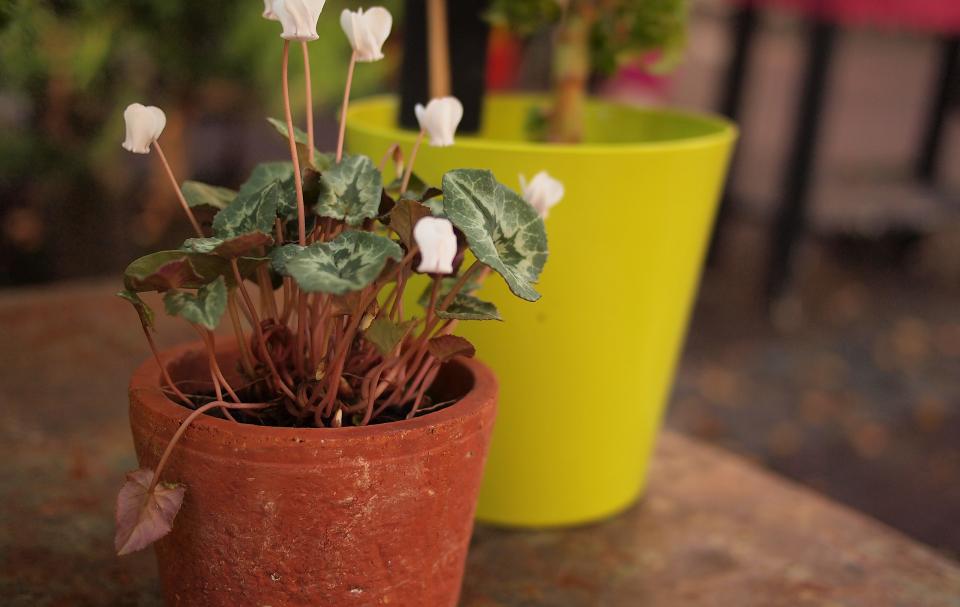This article provides a comprehensive guide to understanding the potential dangers of pothos plants to cats. We'll delve into the scientific basis of pothos toxicity, explore the various symptoms your cat might display, and outline preventive measures to keep your feline friend safe. We'll also answer common questions and address concerns regarding pothos ingestion.
Part 1: Understanding Pothos Toxicity

1.1 The Science Behind Pothos Toxicity
Pothos plants, scientifically known as Epipremnum aureum, are a popular choice for indoor greenery due to their adaptability and low maintenance requirements. However, they belong to the Araceae family, which is known for containing calcium oxalate crystals. These microscopic crystals are sharp and needle-like, and when ingested, they can cause irritation and inflammation in the mouth, throat, stomach, and digestive tract.
1.2 The Nature of Calcium Oxalate Crystals
Calcium oxalate crystals are found in various forms within pothos plants. These forms include:
Raphide crystals: These are long, needle-like crystals that can easily penetrate delicate tissues.
Druses: These are clusters of calcium oxalate crystals that can be more rounded and less sharp than raphides.
When a cat chews on a pothos leaf, these crystals are released and can irritate the cat's mouth and tongue. This irritation leads to the common symptoms of pothos poisoning.
1.3 Severity of Pothos Toxicity
While pothos plants are not considered highly toxic, the severity of symptoms can vary depending on:
The amount ingested: A small nibble might only cause mild irritation, while a larger ingestion could lead to more severe symptoms.
The cat's size: Smaller cats are more susceptible to the effects of pothos ingestion due to their smaller body mass.
Individual sensitivity: Some cats might be more sensitive to calcium oxalate crystals than others.
Part 2: Symptoms of Pothos Poisoning in Cats

2.1 Oral Irritation
The most common symptom of pothos ingestion is oral irritation. This is due to the sharp calcium oxalate crystals irritating the mouth, tongue, and throat. Symptoms may include:
Excessive drooling: You might notice your cat drooling more than usual, possibly accompanied by foaming at the mouth.
Pawing at the mouth: The cat might paw at its mouth repeatedly, trying to relieve the irritation.
Difficulty swallowing: The cat may have trouble swallowing due to pain and swelling in the throat.
2.2 Gastrointestinal Issues
Calcium oxalate crystals can also irritate the digestive tract, leading to:
Vomiting: Your cat might vomit, potentially containing bits of pothos leaves.
Diarrhea: The irritation can cause loose stools or diarrhea.
Loss of appetite: The discomfort in their mouth and stomach might lead to a decrease in appetite.
2.3 Other Possible Symptoms
In some cases, pothos ingestion can also lead to:
Skin irritation: Contact with the sap or leaves might cause redness, swelling, and itching on the skin.
Eye irritation: If the cat rubs its eyes after contact with the plant, it might experience eye irritation.
Part 3: Recognizing Pothos Ingestion

3.1 Signs of Ingestion
If you suspect your cat has ingested pothos, look out for these telltale signs:
Pothos remnants: You might find bits of pothos leaves in your cat's mouth or vomit.
Visible pothos in stool: You might notice pieces of the plant in your cat's stool.
Sudden behavioral changes: Your cat might become lethargic, irritable, or display unusual behaviors.
3.2 Immediate Action
If you observe any of these signs, immediate action is crucial:
Remove any remaining pothos: Ensure that your cat cannot access any remaining pothos plants.
Monitor your cat closely: Pay attention to your cat's behavior and any changes in their condition.
Contact your veterinarian: Call your veterinarian immediately, even if you're unsure about the severity of the ingestion.
Part 4: Preventing Pothos Poisoning
4.1 Keeping Pothos Out of Reach
The most effective way to prevent pothos poisoning is to ensure that your cat cannot access the plant:
Hang the pothos: Consider placing your pothos in a hanging basket or on a high shelf that is inaccessible to your cat.
Use a cat-proof barrier: You can use a cat-proof barrier or enclosure around the pothos to create a safe zone.
Consider alternative plants: Opt for non-toxic plants that are safe for cats, such as spider plants, Boston ferns, or African violets.
4.2 Enriching Your Cat's Environment
Providing your cat with stimulating alternatives can help deter them from exploring your plants:
Scratching posts and toys: Offer scratching posts, interactive toys, and climbing structures to keep them entertained.
Regular playtime: Engage your cat in regular playtime sessions to direct their energy and attention away from plants.
Catnip toys: Catnip toys can often redirect your cat's interest and provide them with an enjoyable alternative.
Part 5: Seeking Veterinary Care
5.1 When to See a Vet
It's crucial to seek veterinary attention promptly if your cat exhibits any of the symptoms described earlier. Even mild symptoms should not be ignored, as they can escalate.
5.2 Diagnosis and Treatment
Your veterinarian will assess your cat's condition and provide appropriate treatment based on the severity of the poisoning:
Inducing vomiting: The veterinarian might induce vomiting to remove any undigested pothos from the stomach.
Supportive care: This includes providing fluids to prevent dehydration and pain medication to alleviate discomfort.
Monitoring for complications: Your veterinarian might monitor your cat for any potential complications, such as gastrointestinal issues or respiratory problems.
Part 6: FAQs
6.1 Is pothos more toxic to kittens than adult cats?
Kittens are generally more susceptible to the effects of pothos ingestion due to their smaller size and developing immune systems. It's crucial to be especially cautious with kittens around pothos plants.
6.2 What if my cat only licked a pothos leaf?
Even a small amount of contact with pothos leaves can irritate the mouth and tongue. Monitor your cat for any signs of discomfort and contact your veterinarian if you're concerned.
6.3 Can pothos cause long-term health issues in cats?
In most cases, pothos poisoning does not result in long-term health issues, especially if treated promptly. However, severe cases can lead to complications.
6.4 Is pothos toxic to cats in any form?
All parts of the pothos plant contain calcium oxalate crystals, including the leaves, stems, and roots. Thus, all parts are potentially toxic to cats.
6.5 Are there any specific pothos varieties that are less toxic?
All varieties of pothos contain calcium oxalate crystals, so there is no known variety that is considered less toxic than others.
6.6 How can I keep my cat from chewing on my pothos plant?
In addition to the tips mentioned earlier, you can try using deterrents, such as:
Citrus peels: Cats generally dislike the smell of citrus. You can place orange or lemon peels near your pothos plant.
Catnip spray: While catnip is attractive to cats, it can also serve as a deterrent when applied to plants.
Bitter apple spray: Bitter apple spray can make the leaves of your pothos plant less appealing to your cat.
Commercial deterrents: You can purchase commercially available cat deterrents that are designed to repel cats from specific areas.
By taking these precautions and being aware of the potential dangers of pothos plants, you can help keep your feline companion safe and healthy.
Everyone is watching
-

Are Cat Ribs Flexible? Understanding Their Anatomy
CATS & KITTENSThis article delves into the fascinating world of feline anatomy, exploring the flexibility of cat ribs and ho...
-

Can Cats Eat Bananas? (Everything You Need to Know)
CATS & KITTENSThis article dives into the intriguing question of whether cats can safely enjoy the sweet, yellow fruit, bana...
-

Cat Lifespan: How Long Do Cats Live?
CATS & KITTENSThis comprehensive guide explores the factors influencing the lifespan of our feline companions, providing ins...
-

Can Cats Get COVID-19? What You Need to Know
CATS & KITTENSThis article will delve into the fascinating world of feline COVID-19 susceptibility. We'll explore whether ca...
-

Can Cats Eat Eggs? A Complete Guide to Egg Safety for Your Feline Friend
CATS & KITTENSWhen it comes to treating our furry companions, we all want to ensure we're doing what's best for them. Eggs...
